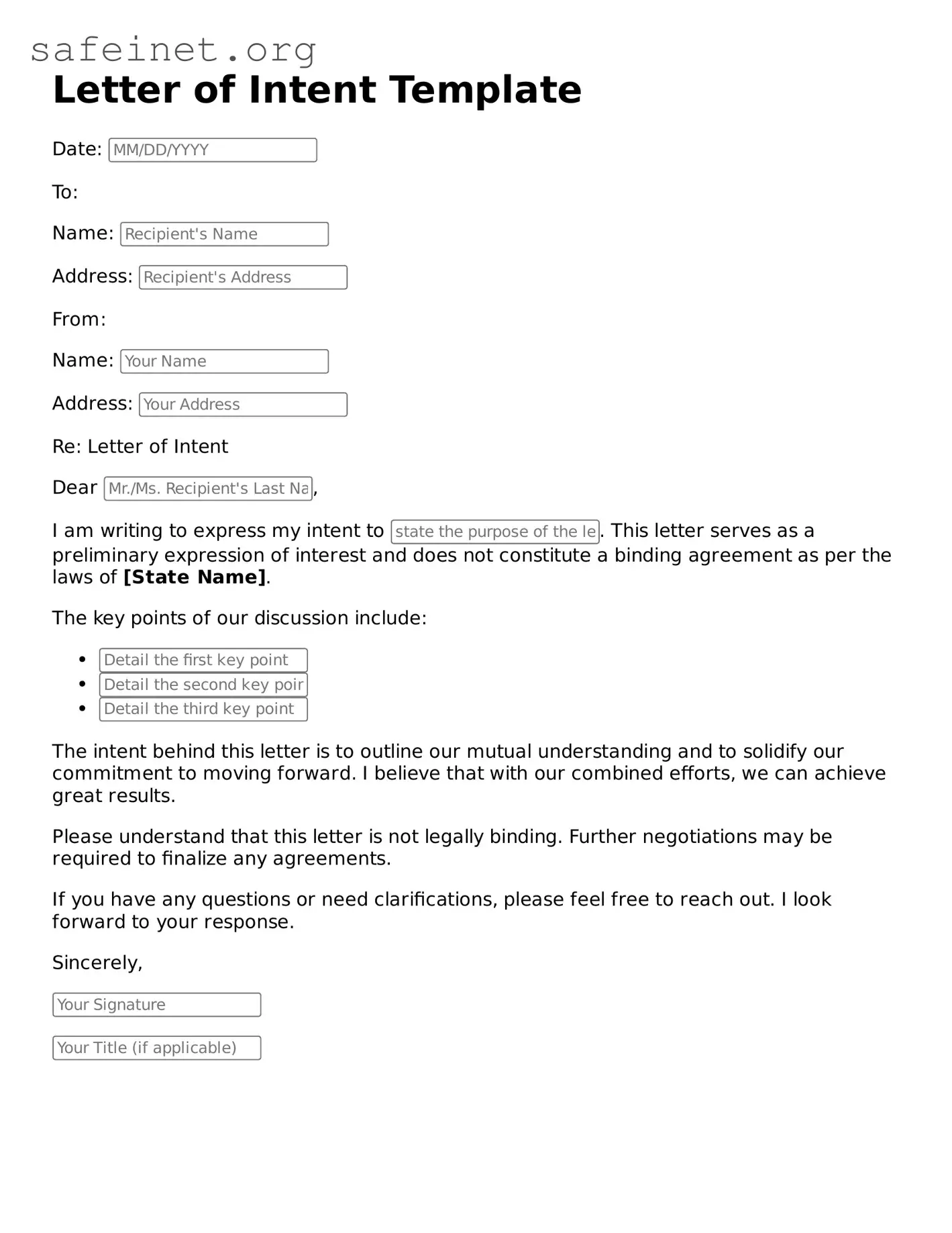What is a Letter of Intent (LOI)?
A Letter of Intent is a document that outlines the intentions of two or more parties to enter into a formal agreement or contract. It typically summarizes key points of negotiation and demonstrates a commitment to move forward with discussions. Although an LOI can vary in detail, it often includes essential elements such as purpose, scope, timelines, and preliminary terms. It serves as a foundation for future negotiations and can help clarify mutual expectations.
Is a Letter of Intent legally binding?
Generally, a Letter of Intent is not legally binding. It serves as a preliminary document that indicates intent and outlines basic terms. However, certain provisions within the LOI can be made binding if explicitly stated, such as confidentiality agreements or exclusivity clauses. It is crucial to specify which parts, if any, are meant to be enforceable to avoid misunderstandings later on.
When should I use a Letter of Intent?
A Letter of Intent is useful in various situations. You might consider using it during negotiations for business transactions, partnerships, real estate purchases, or mergers and acquisitions. It can help establish a clear framework for discussions and indicate that both parties are serious about moving forward. It also allows for a structured approach to negotiations while protecting intellectual property or sensitive information.
What should I include in a Letter of Intent?
When drafting a Letter of Intent, be clear and concise. Include key information such as the names of the parties involved, the purpose of the agreement, important terms (e.g., pricing, deadlines), and any conditions or contingencies that may apply. Also, consider addressing confidentiality, how disputes will be resolved, and the timeline for finalizing the agreement. The more detail you provide, the easier it will be to transition to a formal contract later.
